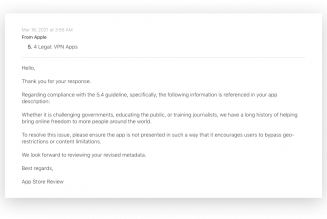
TikTok is starting to offer users a new level of control over their For You page. The company announced today that you’ll be able to specify specific words or hashtags you don’t want to see in your feeds, and the app will automatically filter them out. TikTok’s examples are fairly simple — like when you’ve finished a reno and don’t want to see DIY videos anymore or decide you don’t want to see cooking tutorials using a certain type of food or meat. But these kinds of filters could be used to much more carefully control your feed.
The platform is also rolling out two new automated moderation and filtering tools. One, called Content Levels, ranks content based on “thematic maturity” and is designed to keep mature content of all types from being shown to young users. (TikTok compared it to the rating systems you’d find on movies or video games.) The other attempts to identify videos that are okay one at a time but problematic in bulk — dieting fads, depression-related content, and the like — and avoid showing them repeatedly to users. TikTok has been working on this for a while and is ready to roll it out.
These kinds of automatic tools are TikTok’s bread and butter, and the platform has mostly resisted giving users fine-grained tools for controlling the content they see (or don’t). Even the app’s layout shows its priorities: you can swipe to the Following feed, sure, but the For You page is where TikTok’s remarkable algorithm gets to simply tell you what you like. The more TikTok can just be an app you open and swipe, rather than one that gives you homework, the better.
That’s a tricky position to be in, though, particularly as younger users adopt the app and as problematic types of content become popular. This is the same thing every social app struggles with, really: understanding how users actually interact with and experience content and how to measure success beyond simple views and likes. And, in reality, we still don’t know much about the health impacts of TikTok.
We’re still not getting a “please enter me into #gardeningtok” button, and TikTok still has questions to answer about the content it chooses to recommend, but it’s nice to see TikTok giving users a bit more control over their own feeds. The app has had a “Not Interested” button for a while, which you can use to stop seeing videos from a particular user or those that use a particular sound. Adding the hashtag filters is an obvious next move and is similar to what some other social platforms have done.
The word-based filters are currently only looking at video descriptions and text-based stickers. But down the road, they could in theory be much more powerful: captions are a core part of TikTok, and its automatic captions are typically quite good, which means the platform could start to more deeply understand the content of its videos just by having their transcripts. For now, you might only be able to filter out individual words, but as machine learning and language models continue to improve, that feature could quickly get more sophisticated. That same work will benefit the rest of TikTok’s moderation work, too. The more it understands both its content and its viewers, the better it can tailor the experience. Neither is easy to figure out, though.
TikTok’s new features are rolling out “in the coming weeks,” the company said.









